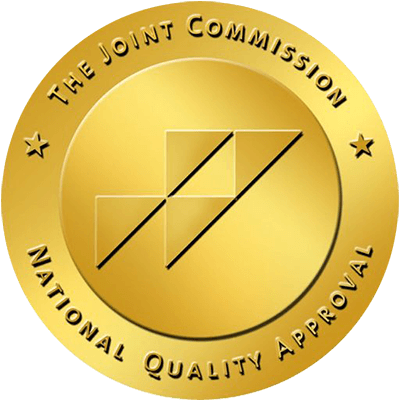Written by Ashley Kane,
Brightside Health
6 Minute Read

Medically reviewed by:
Conor O’Neill, PHD
Assoc. Director of Therapy
10 Minute Read

What Is PMDD & How Does It Impact Mental Health?
Have you heard of PMDD?
A majority of women experience at least some of the symptoms of premenstrual syndrome (PMS).
But for millions of women, the symptoms don’t stop there. It’s estimated that between 3 and 8% of women of childbearing age— millions worldwide— experience a range of mood and mental health symptoms related to their periods that may be signs of premenstrual dysphoric disorder (PMDD).
Because PMDD is a mental health condition, and because not recognizing the signs or symptoms and seeking treatment can have a dramatic impact on your life, we wanted to take a moment and explore this complex and disruptive condition.
What Is PMDD?
PMDD is a premenstrual condition that combines the physical symptoms of PMS with emotional symptoms that can be severe. According to the Mayo Clinic, “Both PMDD and PMS may cause bloating, breast tenderness, fatigue, and changes in sleep and eating habits. In PMDD, however, at least one of these emotional and behavioral symptoms stands out:
- Sadness or hopelessness
- Anxiety or tension
- Extreme moodiness
- Marked irritability or anger
Per DSM-V-TR, in addition, one or more of the following must also be present for a diagnosis of PMDD:
- Decreased interest in usual activities (e.g., work, school, friends, hobbies).
- Subjective difficulty in concentration.
- Lethargy, easy fatigability, or marked lack of energy.
- Marked change in appetite; overeating; or specific food cravings. 5. Hypersomnia or insomnia.
- A sense of being overwhelmed or out of control.
- Physical symptoms such as breast tenderness or swelling, joint or muscle pain, a sensation of “bloating,” or weight gain.
It is believed that PMDD is caused by changes in the serotonin and hormonal levels in a person’s body at the time leading to menstruation. As the Cleveland Clinic explains:
“Decreasing levels of estrogen and progesterone hormones after ovulation and before menstruation may trigger symptoms. Serotonin, a brain chemical that regulates mood, hunger, and sleep, may also play a role. Serotonin levels, like hormone levels, change throughout your menstrual cycle.”
Researchers at the National Institutes of Health found evidence that PMDD may be genetic. Girls whose mothers have a history of severe premenstrual symptoms are more likely to have PMDD.
As we explained above, PMDD can be incredibly disruptive, and identifying the signs and symptoms is key.
If you think you may be experiencing PMDD learn about how Brightside Health can help.
Want to speak 1:1 with an expert about your anxiety & depression?
Symptoms of PMDD
PMS and PMDD share a number of symptoms. This can make it a little tricky to determine if you are experiencing PMS vs PMDD. To help make the distinction, let’s review the common symptoms of both.
PMS symptoms include:
- Swollen or tender breasts
- Constipation or diarrhea
- Bloating
- Cramping
- Headache or muscle aches
- Clumsiness
- Lower tolerance for noise or light
- Irritability
- Feeling tired
- Sleeping problems
- Appetite changes
- Trouble with concentration or memory
- Tension or anxiety
- Depression, feelings of sadness, or crying spells
- Mood swings
- Reduced interest in sex
PMDD may also include severe feelings of anxiety which might involve:
- Anger or irritability
- Feelings of sadness or despair, or thoughts of suicide
- Panic attacks
- Loss of interest in usual activities and relationships
- Feeling out of control
PMDD symptoms include the symptoms mentioned above, and may also include:
- Difficulty in controlling the feelings of worry, often without control in shifting from one topic to another
- General restlessness
- Fatigue or the feeling of being easily tired
- Difficulty concentrating
- Insomnia
- Irritability
- Muscle aches or soreness
- Feelings of panic, dread, or ‘impending doom’
As the Mayo Clinic puts it, “In both PMDD and PMS, symptoms usually begin seven to 10 days before your period starts and continue for the first few days of your period.” The key difference between PMS and PMDD is the presence of the specific emotional symptoms listed above.
PMDD is treatable
The good news is that PMDD is treatable. PMDD treatment will often involve both therapy and medication (such as an SSRI antidepressant that can help balance the serotonin levels in your body).
That said, therapy isn’t going to make PMDD or its symptoms go away. Instead, therapy would focus on how to manage symptoms to reduce functional impairment and impact. For example, therapy might help individuals use urge surfing or mindfulness techniques when irritability or mood swings are notably activated.
Therapy can also be helpful for tracking purposes. As you gain more knowledge of the rhythm of your cycles over time, you gain a better understanding of the initial symptoms that are the cues to greater symptom presentation/elevation in the coming days. That can be helpful for organizing daily decision-making opportunities.
Perhaps you can plan around when you feel most capable of managing symptoms. You may be able to work with close people in your life, like a partner, to get extra support with tasks or other household duties, because it may be more challenging to do them yourself during that time.
Therapy may also be helpful for having those discussions with your partner or close others in your life so that they know that it is a time for extra interpersonal empathy and sensitivity relative to the rest of the month.
Mental health impact of PMDD
While not every woman will experience PMDD, You may be more prone to PMDD if you have:
- Anxiety
- Depression
- Family history of PMDD, or mood disorders
And, like any disruptive mood disorder, PMDD has the potential to make existing depression or anxiety worse. Depending on the severity and duration of symptoms, those with PMDD may experience suicidal thoughts.
If you do experience symptoms, it’s very important to get treatment. Untreated PMDD can lead to depression and affect your life, relationships, and career.
Brightside is able to help you manage your PMDD. With a range of treatment options that include therapy right in your own home. If your symptoms are impacting your daily life, Brightside’s providers may recommend medication to treat your PMDD.
Want to speak 1:1 with an expert about your anxiety & depression?














